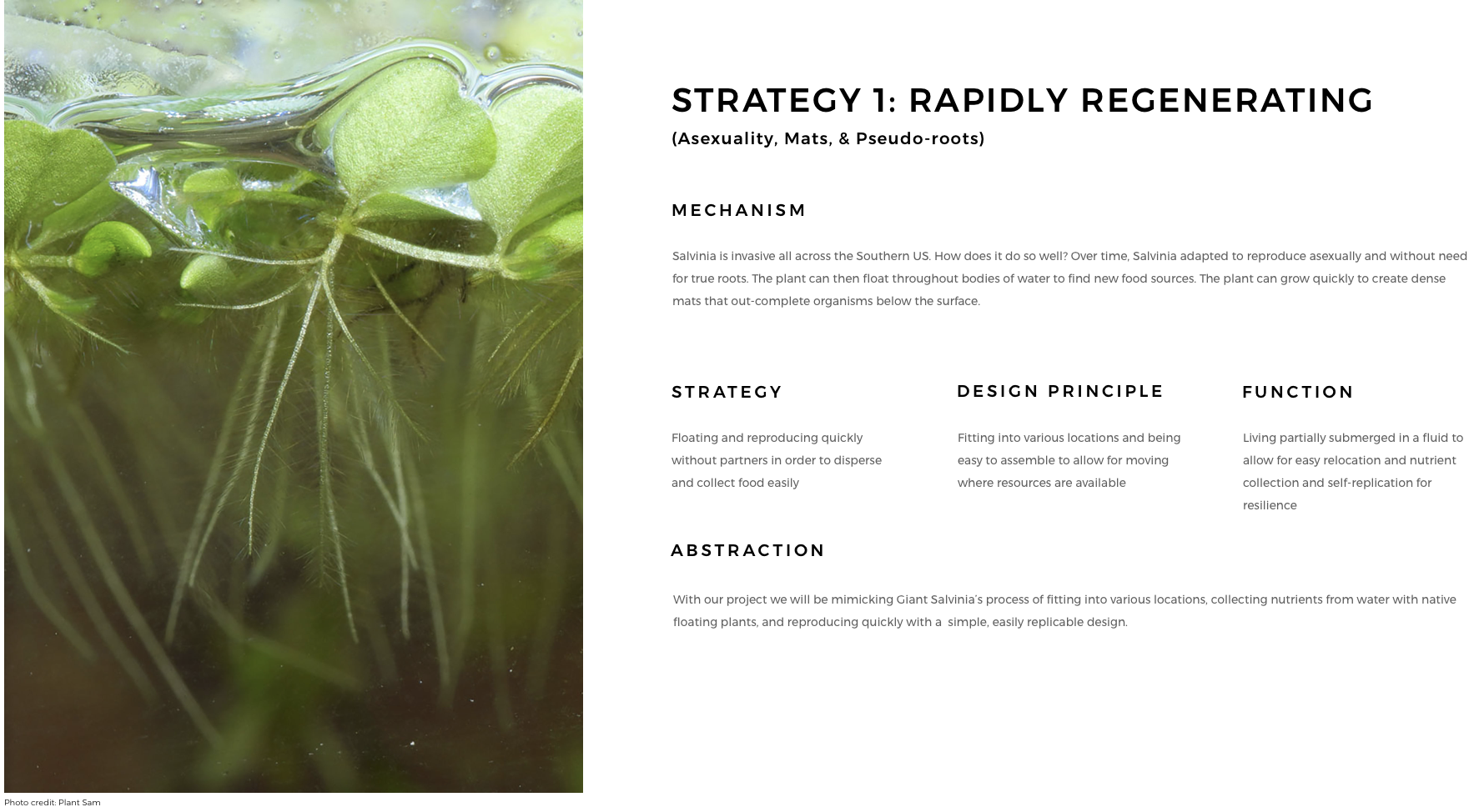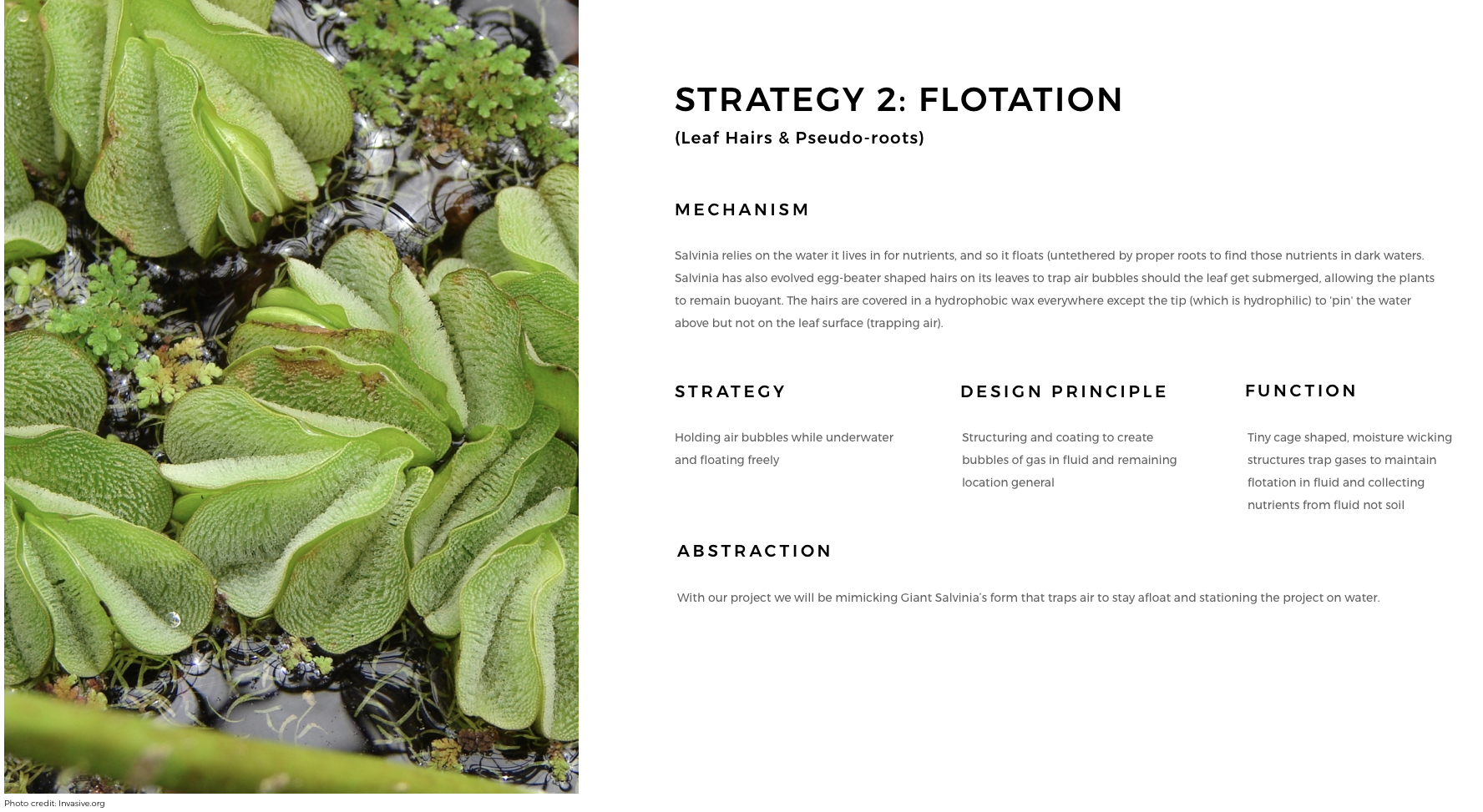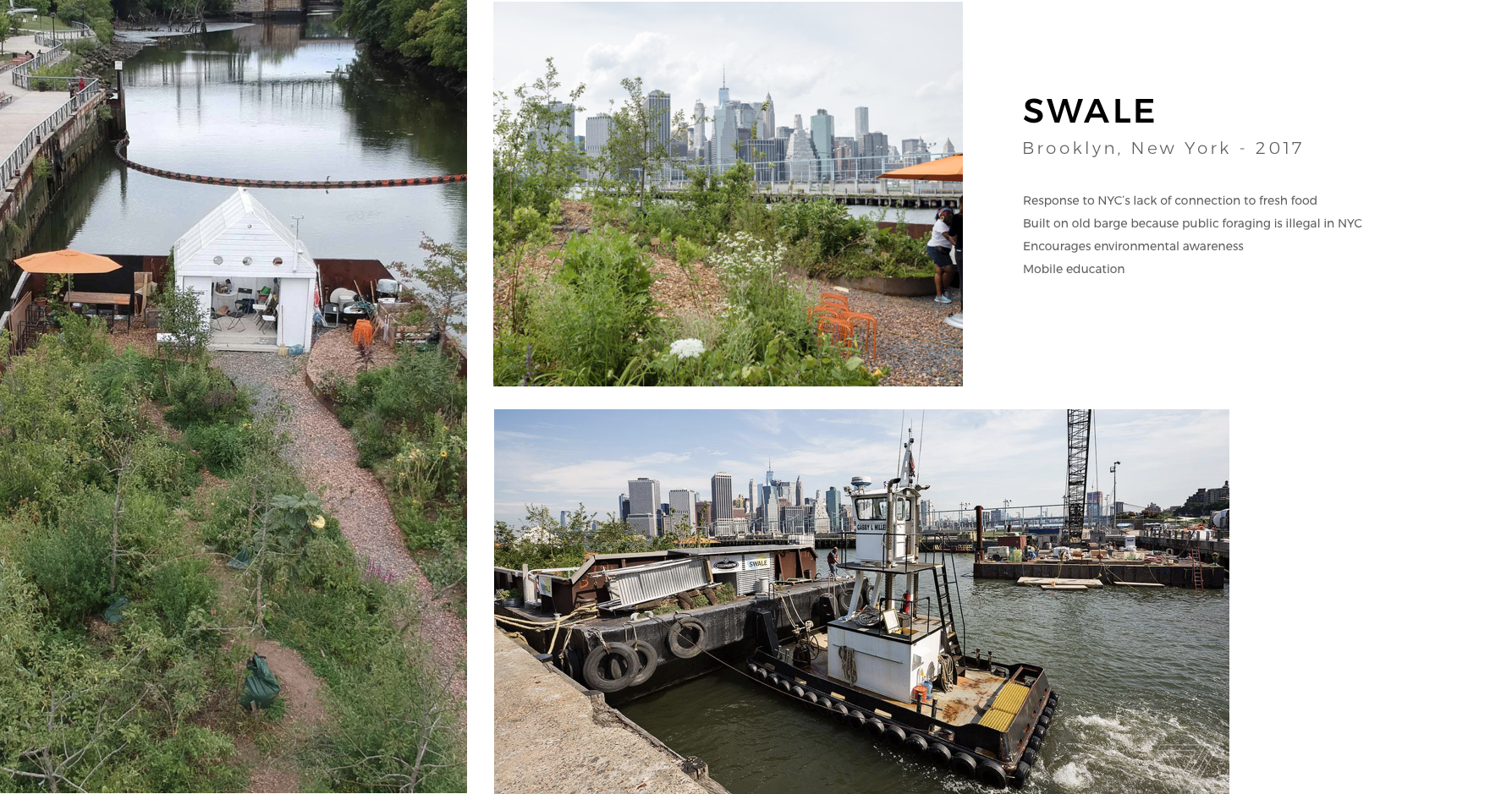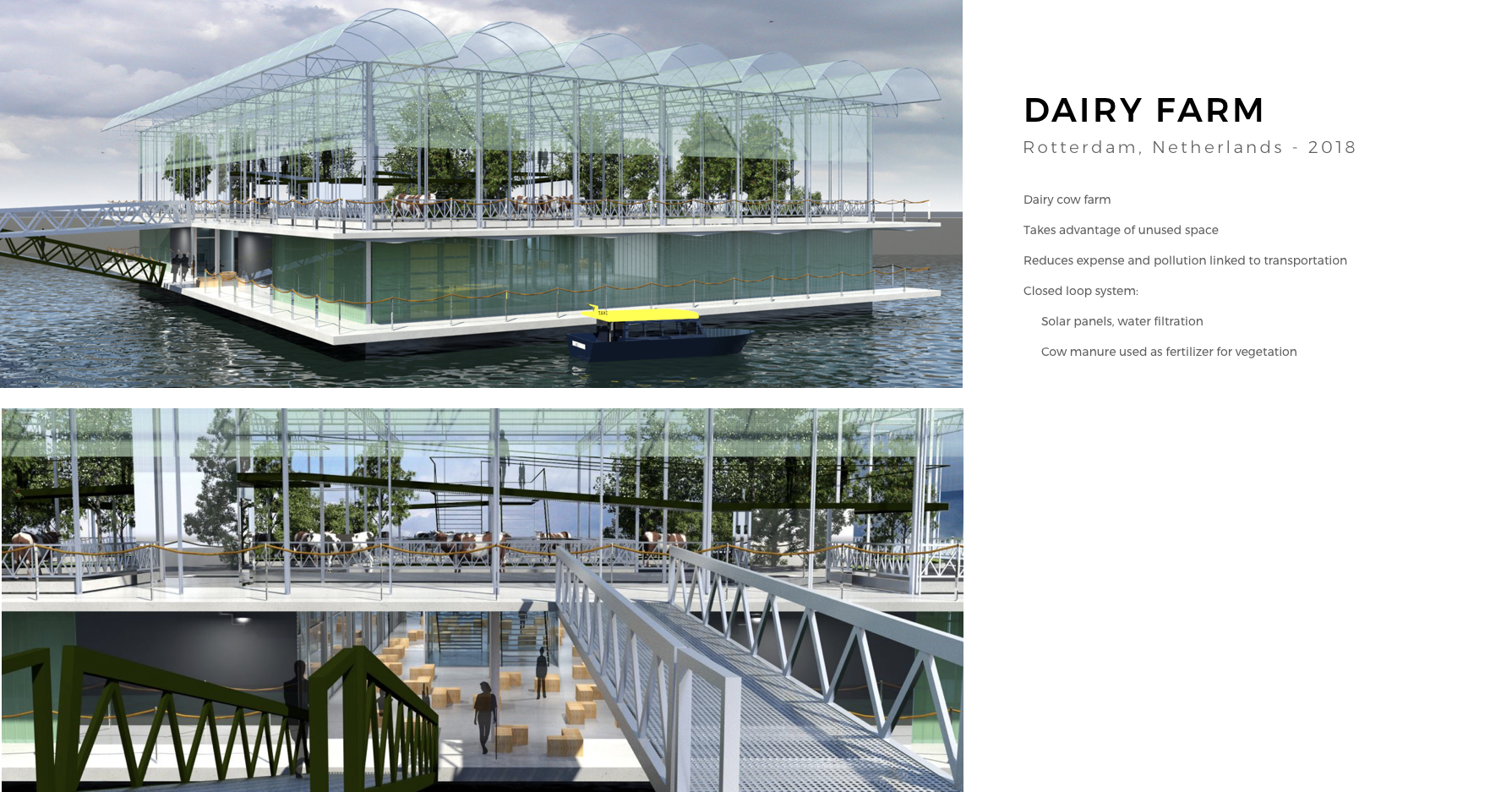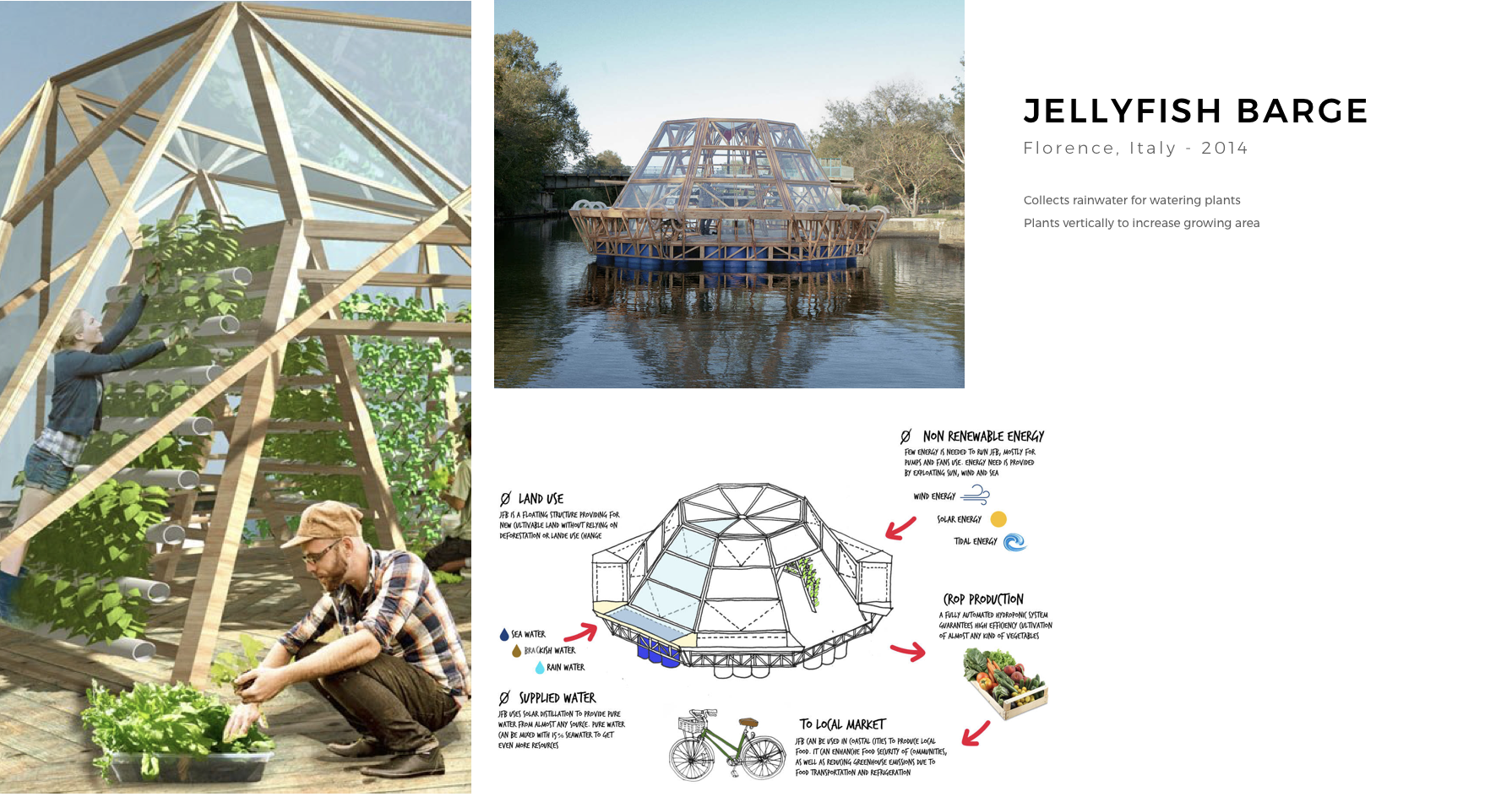Timeline
03/25/19 - 05/23/19
Role
UX Research, Content Strategy, Visual Design
Deliverables
Methodology
Implementing Biomimicry 3.8’s model of Biology to Design, we started with a reconnection to nature, discovering ‘nature’s genius’ in the 3.8 billion year old resulting adaptations that create functions and strategies we see in organisms today. As opposed to the Challenge to Biology model, we did not start with a problem to solve, but rather inspiration from nature that led to a human context which nature could lend its expertise. Through multiple field studies in the Savannah, GA area led by our Biomimicry instructor: Professor Scott Boylston and our biologist at the design table: Cathy J. Sakas, we cleared our minds of preconceived notions about what we wanted to design and let ourselves be inspired. We looked at a number of others before settling on one to emulate.
Model Organism
Giant Salvinia
Our group chose to abstract the functions of Salvinia Molesta, a free-floating aquatic fern that grows in warm, humid climates. Using the Biomimicry Taxonomy, we identified common functions and purposes that we applied to our project: it’s rapid regeneration through asexual reproduction, dense mat structures, and pseudo-roots, and it’s floatation through cage-like leaf hairs and pseudo-roots.
After looking at all these functions separately, we started to see them are two main functions: invasive strategies for survival and free-floating or remaining location general for adaptability.
Context
Problem Statement
Context: Savannah, GA in 2075
Since 1950, the sea level in Georgia has risen to 11 inches. There are 100 miles of coastline and 14 boundary islands on Georgia's coast in danger from sea level rise. In Georgia this rise could cause the loss of imperative wetlands and more than 13,000 properties are at risk from regular tidal flooding in Georgia.
With many cities, homes, and infrastructure already at risk, there are 3 options: Retreat, Build & Protect, Float & Accommodate. For this project, we are taking Salvinia’s lead and will be floating some of that critical infrastructure. We have decided also to look forward to the year 2075 for implementation, giving a buffer of 25 years before the full 3 feet of sea level rise is realized.
Research
Case Studies
With our target audience and context in mind, we began to brainstorm possible opportunities for addressing food needs in an urban space that is going to be heavily affected by sea level rise and increased storms from Climate Change. We explored the case studies of floating gardens and homes that remind us of our plant: Giant Salvinia, freely floating and gathering nutrients form the water. Some case studies of floating homes and personal gardens were also evaluated; however, our passion is for building community and protecting all members, not just a few individuals. Additionally, the project could be scaled down to fit individual needs in another project, so there was no need to think small at the start.
Case Study Analysis
Two aspects we focused on in the analysis of our case studies were: scale and social impact. We wanted to see how the physical size related to the human impact the project could have and where we could find new opportunity to provide services the others did not already provide.
Two other aspects we focused on in the analysis of our case studies were: resource efficiency and resiliency. We wanted to see how if the more resilient structures were also resource efficient.
Primary Interviews
In order to discover if our assumptions are correct and fill in the gaps that secondary research could not answer, we conducted interviews with local community organizers, farmers, and those who use innovative food growing techniques.
Research Insights
After all our research, we narrowed our findings down to a few key insights that overall confirmed our assumptions, filled in our knowledge gaps, and informed our design. Our biggest relief was knowing that savannah residents do desire access to green space and community gardens. We also had multiple people confirm that if we are going to be growing plants, we should not be using Savannah river water to using energy to desalinate brackish water. Therefore, we brainstormed a new closed-loop water source option: rainwater.
Project Scope
Lanvia Gardens
Given the opportunity to build a resilient food source for Savannah residence as the sea levels rise, the team decided to design Lanvia Gardens. Lanvia Gardens emulate the Giant Salvinia to create a productive modular floating garden that will provide food for Savannah neighborhoods. Lanvia Gardens are physically resilient and promote community interaction that builds social resilience.
Sketches
In our initial ideation sketches, we were entranced by the strong triangular shapes we saw in some case studies such as the Jellyfish Barge. We also initially wanted to design low-tech so as to give the community the ability to build the structures quickly and by themselves. Although these are valid directions, for this project we decided that modeling after farm and garden hoop houses would increase food production (to reliably help people in a disaster) and that we needed more resilient technology than low-fidelity materials and assembly could offer. However, our ideation confirmed our commitment to a community garden, rather than individual home model. Additionally we maintained the idea of emulating Salvinia’s flotation by trading air in many pockets.
Final Design
Community Garden Model
Lanvia Gardens are designed to support a free-access community garden where the public is welcome to use the space and visit, similar to a library. Yet, there’ll be sponsors for each of the plots or hoop houses by various local community groups, religious organizations, and families. There would be a paid city educator and facilitator to maintain each Lanvia Garden. This way, the community is knowledgable and invested in the project while not putting a large burden on city staff.
Lanvia Gardens would be operated using regenerative design principles of co-evolving with nature. Through rainwater collection, creating marsh plant habitat, removing litter from Savannah rivers, and growing healthy food to reducing inequality in diets due to income disparity. Lanvia gardens will restore some pieces of the broken pieces of local systems while leaving room for adapting with nature over time. Community activities and use of the community space can change over time just as the plants can change with the weather and tastes of the community. Permaculture and sustainable agriculture practices such as companion planting, soil restoration through crop rotation, and planting diverse plant varieties for resilience are core to the Lanvia model.
Leverage Points
In Donella Meadow’s Book Thinking in Systems and also in the Biomimicry resource Handbook, she outlines ‘leverage points’ for intervening in a troubled system. Some leverage points are more or less effective as illustrated here. Self-Organization is a fairly high leverage point and also one of the Life’s Principles. Lanvia Gardens are designed to be self-organizing. Meadows describes self-organization as “the power to add, change, or evolve the system structure.” Lanvia Gardens are decentralizing and diversifying the food system, allowing for community innovation, and starting a process of environmental restoration.
Sustainable Development Goals
The United Nations created a set of 17 goals and target for humans to achieve globally in order to achieve a sustainable future for all. Many organizations and projects around the world are inspired by and sharing their commitments to theses goals. We see Lanvia Gardens as primarily addressing 4 of the goals below, helping create urban resiliency for food and well-being in the face of Climate Change.
Life’s Principles Evaluation
Throughout the project we have returned to Life’s Principles to ensure we are designing for co-evolution with nature. With the design complete, we again return to Life’s Principles for an evaluation of our work, using nature as a model and measure. Lanvia Gardens incorporate aspects of each of the main Principles.
Lanvia Gardens are a big step to co-evolving with nature and integrating humans back into eco systems. Through tuning into Life’s Principles holistically, new infrastructure can emulate nature’s intelligence, and provide for the future.


